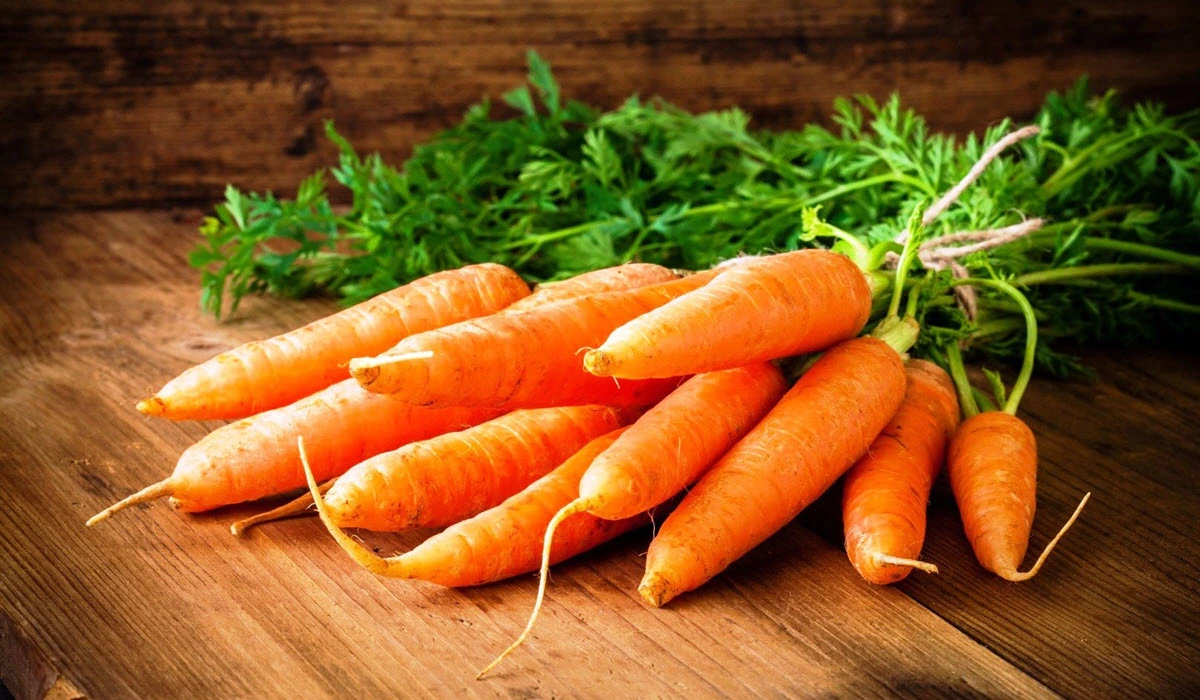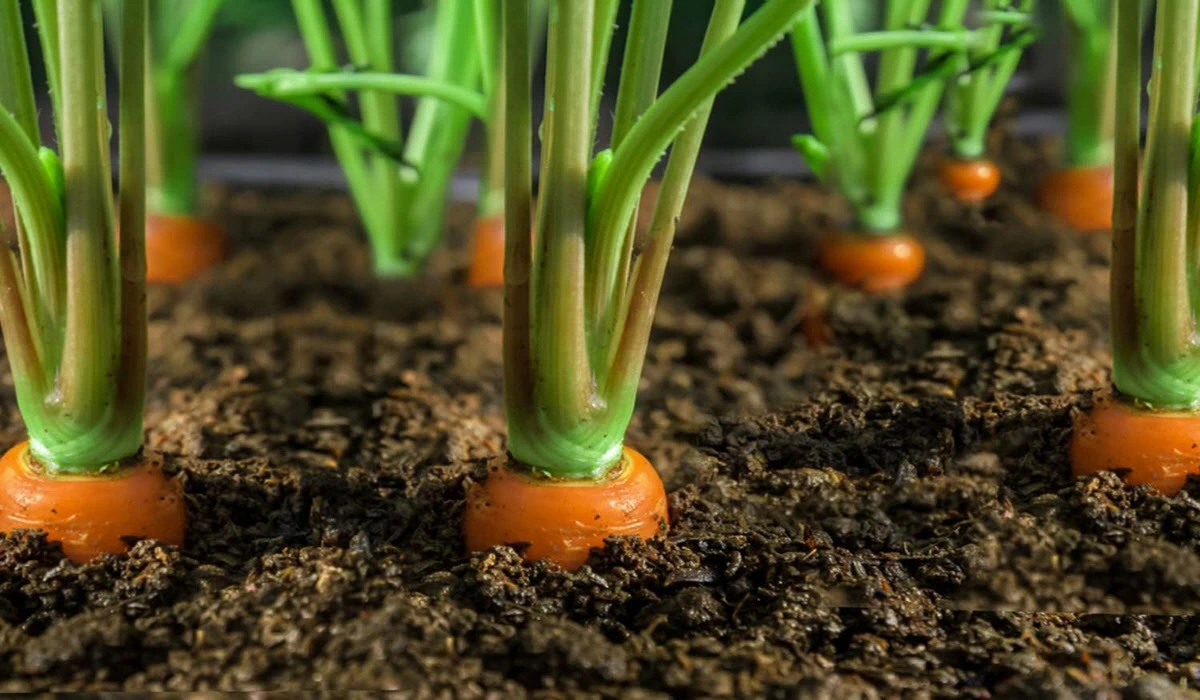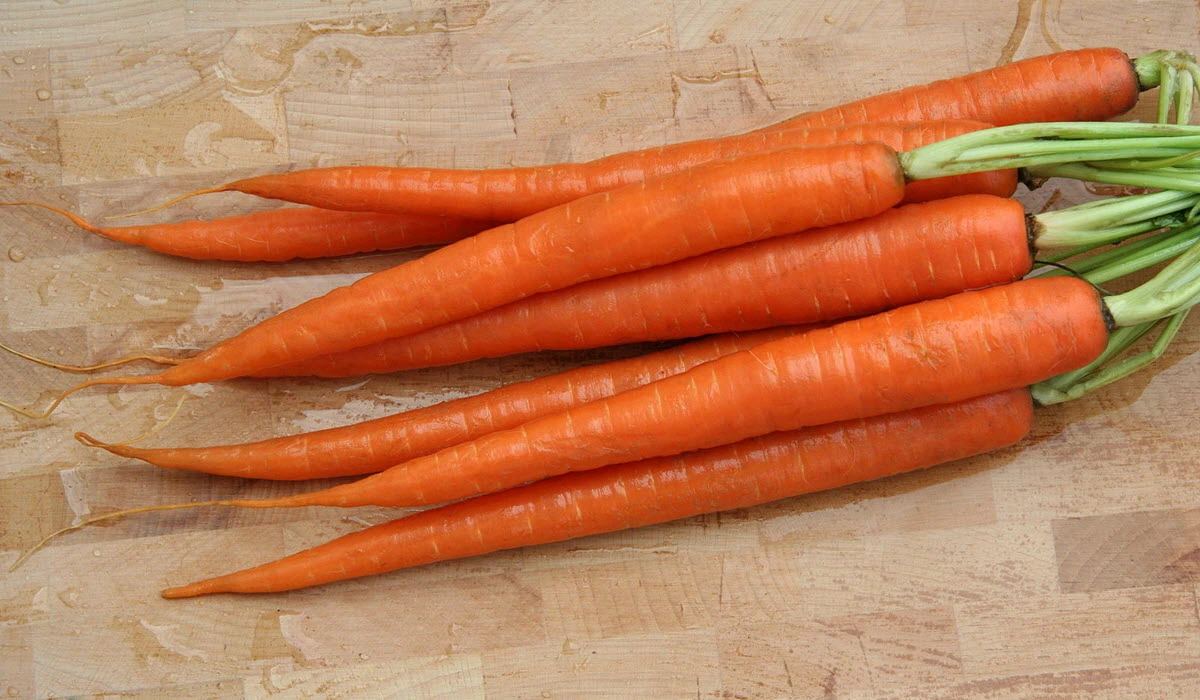Carrots, with their vibrant color, crunchy texture, and sweet flavor, are a popular and nutritious addition to any kitchen. What if you could enjoy the satisfaction of growing your own carrots, right in your backyard or even in containers on your balcony? In this article, we will explore how to grow carrots from seed, how to grow carrots at home, best soil to grow carrots and the benefits of carrots.

Choosing the Right Carrot Variety
Carrots come in various shapes, sizes, and colors. Some popular varieties include Nantes, Danvers and Imperator. When selecting a variety, consider your climate, available space, and personal preferences. Shorter varieties are suitable for containers or heavy soils, while longer varieties thrive in loose, well-draining soil.
Preparing the Soil
Carrots prefer drained soil with plenty of organic matter. Before sowing, prepare the soil by removing stones and other debris. Dig the soil to a depth of at least 8 inches, breaking up any clumps.

|
CHRYZTAL Stainless Steel Heavy Duty Gardening Tool SetGarden Tool Set, Stainless Steel Heavy Duty Gardening Tool Set, with Non-Slip Rubber Grip, Storage Tote Bag, Outdoor Hand Tools, Ideal Garden Tool Kit Gifts for Women and Men |
Sowing Carrot Seeds
Carrots are typically grown from seeds rather than transplants. Sow the seeds directly into the garden bed or in pots, preferably in early spring or fall. Create furrows around 1/4 to 1/2 inch deep and space them 2-3 inches apart. Plant the seeds thinly, as overcrowding can result in misshapen carrots. Cover the seeds with a light layer of soil and water gently.
Watering and Maintenance
Carrots require consistent moisture throughout their growth cycle. Keep the soil evenly moist but not waterlogged. Water deeply to encourage the roots to grow downwards. Avoid overhead watering as it may lead to diseases. Mulching around the plants helps to retain moisture, suppress weeds, and maintain an even soil temperature.
Thinning and Weeding

Once the carrot seedlings have emerged and reached a few inches in height, thin them to provide adequate space for growth. Space the seedlings 2-4 inches apart, depending on the desired size of the mature carrots. Regularly weed the area around the carrots to prevent competition for nutrients and water.
Fertilizing
To promote healthy growth, apply a balanced fertilizer about a month after sowing. Carrots require nutrient-rich soil, so consider using a slow-release organic fertilizer or compost to avoid excessive nitrogen, which can result in forked roots.

|
5 pack Garden Pruning Shears Stainless Steel Blades5 pack Garden Pruning Shears Stainless Steel Blades, Handheld Scissors Set with Gardening Gloves,Heavy Duty Garden Bypass Pruning Shears,Tree Trimmers Secateurs, Hand Pruner |
Pest and Disease Control
Carrots are generally resilient to pests and diseases, but a few common culprits to watch out for include carrot rust fly, aphids, and fungal diseases like powdery mildew. Use row covers to protect against carrot rust flies, and consider companion planting with aromatic herbs like dill or marigold to deter pests. If necessary, organic insecticides or fungicides can be used as a last resort.
Harvesting Carrots

Carrots are typically ready for harvest 60-80 days after sowing, depending on the variety. Gently loosen the soil around the carrots and pull them out by grasping the green tops near the soil line. Avoid breaking or bruising the roots during harvest. For winter storage, cut off the leafy tops, leaving about an inch of the stem, and store the carrots in a cool, dark, and humid place.
Health Benefits of Carrots

Promotes Eye Health: Carrots are renowned for their high content of beta-carotene, a precursor to vitamin A. Vitamin A is essential for maintaining good vision, and a deficiency can lead to night blindness or other eye-related issues. Consuming carrots regularly can help improve vision, protect against age-related macular degeneration, and maintain overall eye health.
Antioxidant Powerhouse: Carrots are loaded with antioxidants, including beta-carotene, lutein, and zeaxanthin. These antioxidants help neutralize harmful free radicals in the body, reducing oxidative stress and protecting against chronic diseases, including heart disease, certain cancers, and cellular damage.
Heart Health: The fiber, potassium, and antioxidants in carrots contribute to heart health. The soluble fiber in carrots helps lower cholesterol levels, while potassium helps regulate blood pressure. The antioxidants in carrots also play a role in reducing the risk of heart disease by protecting against oxidative damage and inflammation.
Skin Health: The antioxidants and vitamins present in carrots contribute to healthy skin. Beta-carotene, in particular, is converted to vitamin A in the body, which helps maintain skin integrity, promotes wound healing, and contributes to a radiant complexion. Regular consumption of carrots can help improve skin health and slow down the aging process.
Weight Management: With their high fiber content and low-calorie count, carrots are an excellent addition to a weight management plan. The fiber helps promote feelings of fullness, reducing overall calorie intake. Additionally, carrots make a satisfying and nutritious snack option that can replace less healthy alternatives.
Conclusion
Growing your own carrots can be a rewarding experience that allows you to enjoy fresh, homegrown produce bursting with flavor and nutrition. By following this carrot growing guide and maintaining proper care, you can cultivate a bountiful harvest of vibrant carrots to savor in a variety of culinary delights. So, roll up your sleeves, grab your gardening tools, and embark on a journey to grow your own carrots – the epitome of delicious and healthy goodness!



Comments are closed.